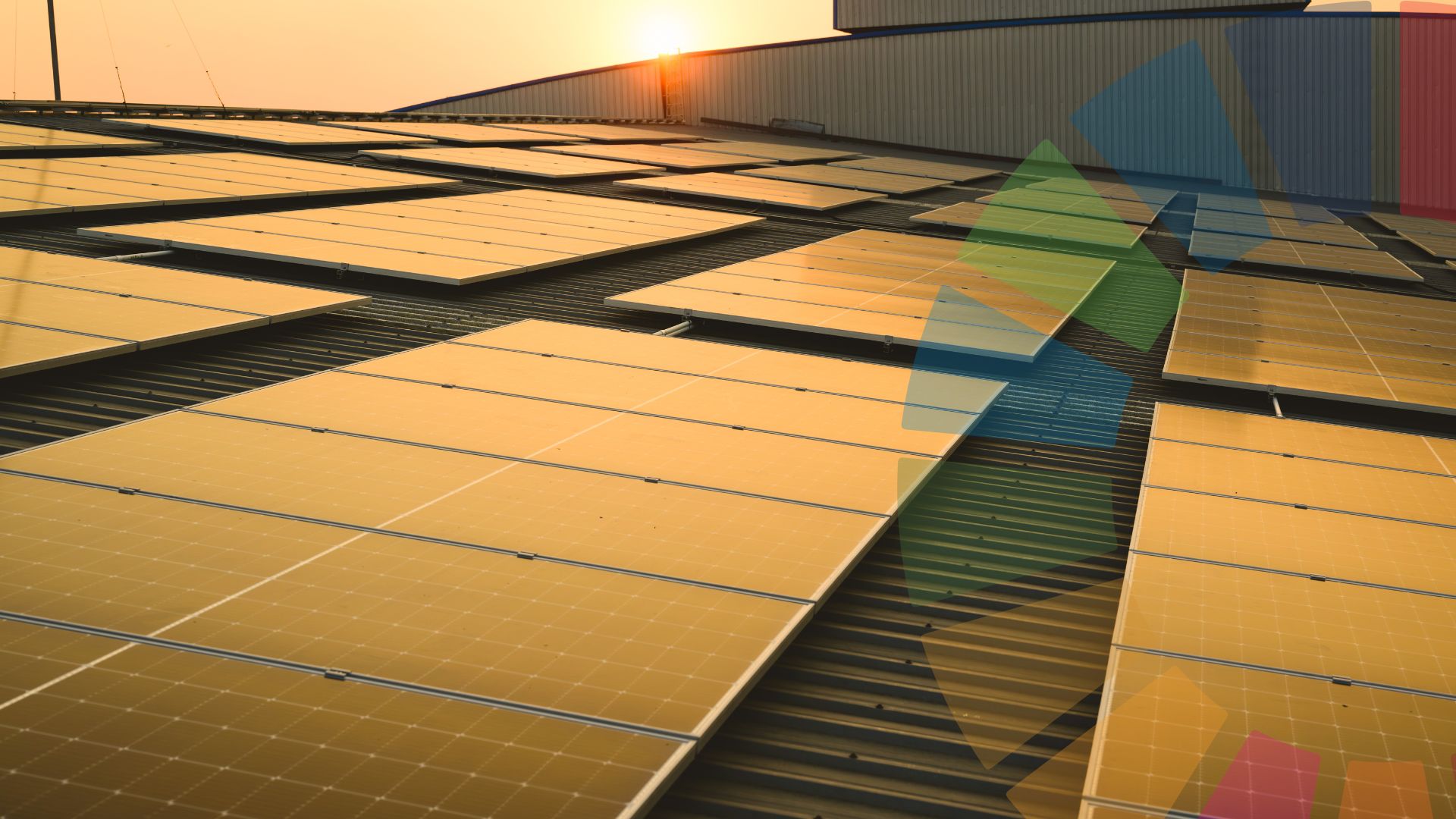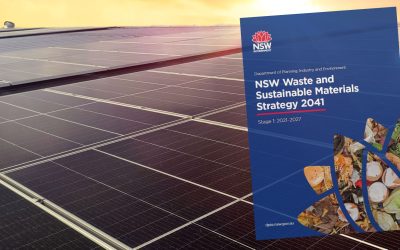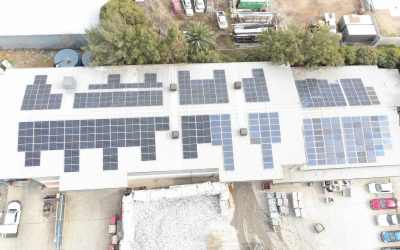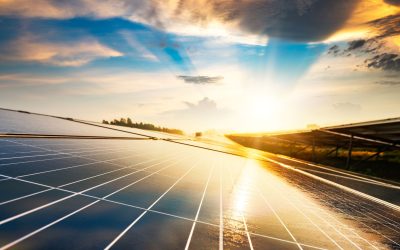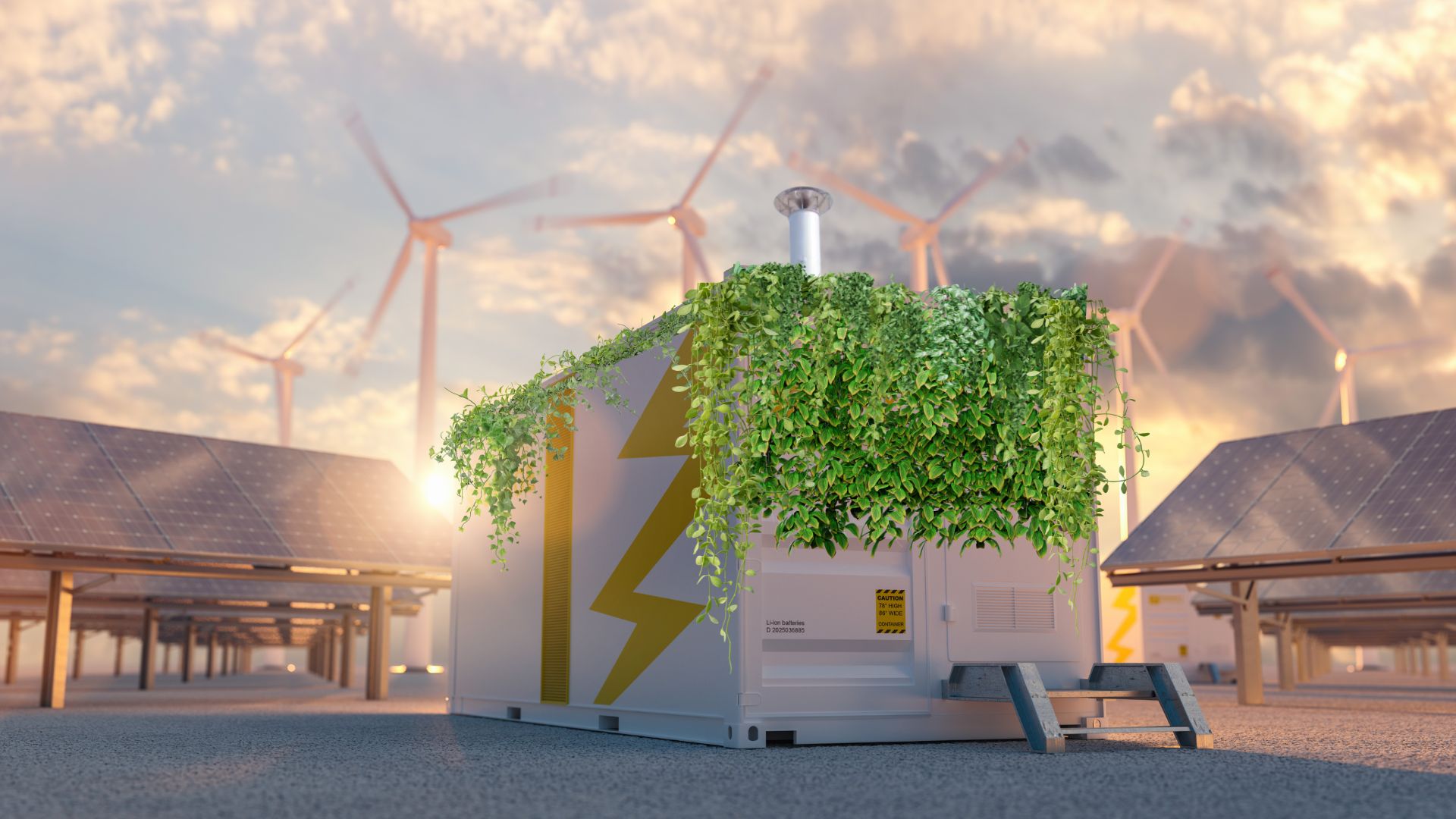
The Irony of Diesel Generators in Renewable Energy Construction – And 4 Low Carbon Alternatives
Renewable energy projects, like wind and solar farms, aim to reduce our dependence on fossil fuels. But there’s a glaring irony: diesel generators are still widely used during their construction. Whether powering machinery on a solar farm site or providing energy for teams installing electrical transmission lines, these diesel generators continue to pump out carbon emissions – the very thing these projects are meant to curb.
Diesel generators are relied on because they’re portable, powerful, and familiar. But their use during the building phase of clean energy infrastructure sparks frustration. It feels like taking one step forward and half a step back when the renewable energy industry itself is forced to lean on fossil fuels.
So, what’s the alternative? Here are four low-carbon options that can replace traditional diesel generators for renewable energy construction projects.
1. Renewable Diesel
Renewable diesel like HVO100 is a cleaner alternative to traditional diesel, made from renewable resources like animal fats and plant oils. HVO100 reduces greenhouse gas emissions by up to 91% compared to fossil fuels without sacrificing performance, making it a seamless drop in replacement for conventional diesel generators.
Renewable diesel can be more expensive that traditional fossil fuel derived diesel and make sure you check with your diesel generator provider that the engines are approved for use with paraffinic fuels such as HVO in Power Generation applications.
2. Hydrogen Generators
Hydrogen fuel cells offer another promising alternative. By converting hydrogen into electricity, these cells generate only water as a byproduct. Hydrogen fuel cells are increasingly being used in construction to power everything from site lighting to heavy machinery. Though they’re still relatively new in widespread use, their emissions-free operation makes them a leading candidate for replacing diesel generators in the near future.
As the hydrogen economy is still in its infancy, the lack of large-scale hydrogen production and delivery means it will likely cost more than diesel, gas or biofuel equivalents in the short to medium term.
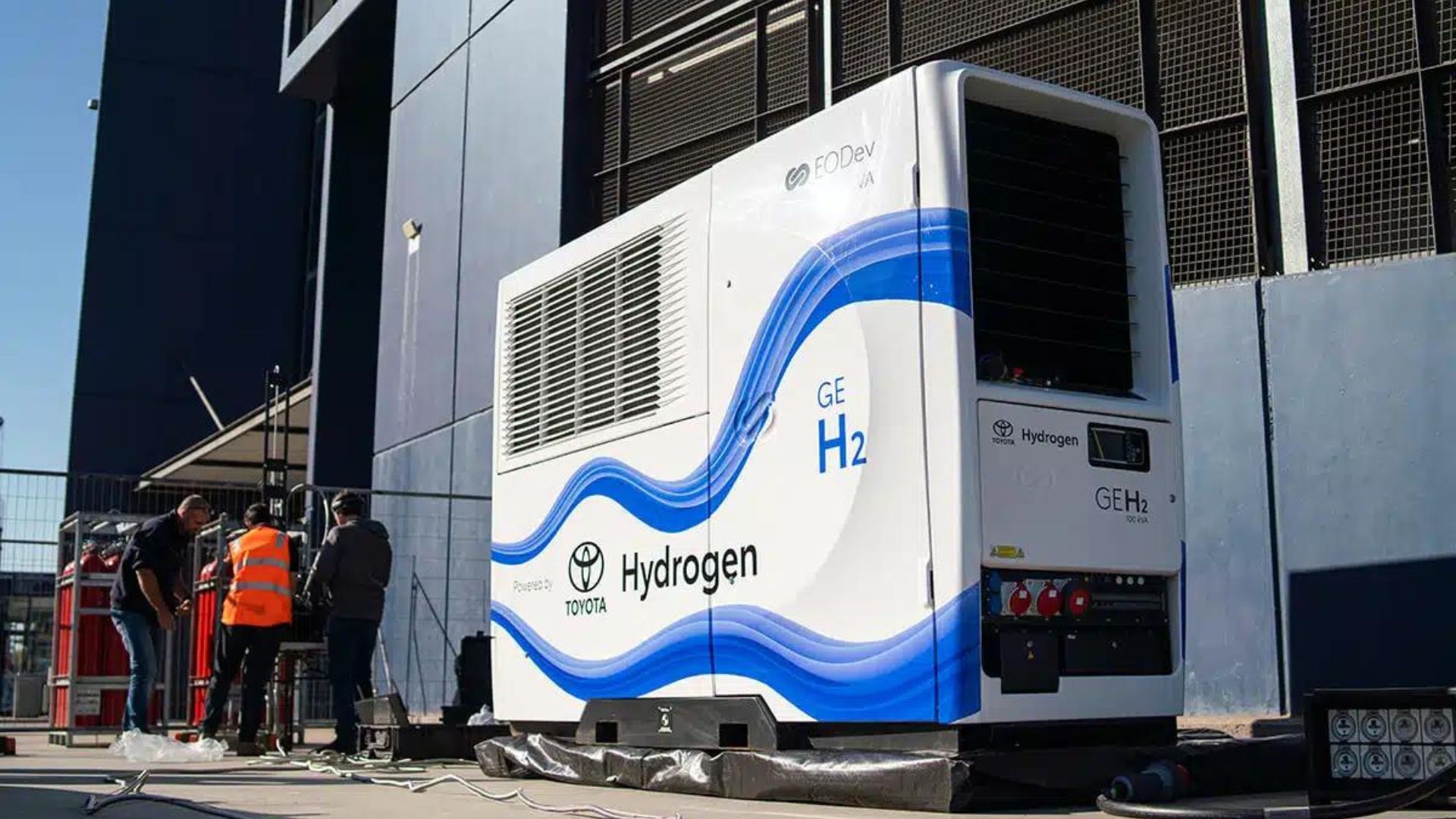
Hydrogen Generator
3. Hybrid Solar-Diesel Systems
Okay, so this one still involves diesel, but hear us out. Hybrid systems combine solar panels with smaller, more efficient diesel generators. These systems rely on solar energy as much as possible and only kick the diesel generator into gear when needed. By significantly reducing diesel use, hybrid systems can cut emissions and operating costs while still delivering reliable power. Plus, these systems are an excellent transitional solution for teams that aren’t yet ready to go fully diesel-free.
Here is an example of the benefits of combining a 100kVA diesel generator with one of our 81.75kWp mobile solar modules which are circular by design. (Note – this example is generic and based on a number of assumptions. Get in touch with us to get an assessment for your specific site).
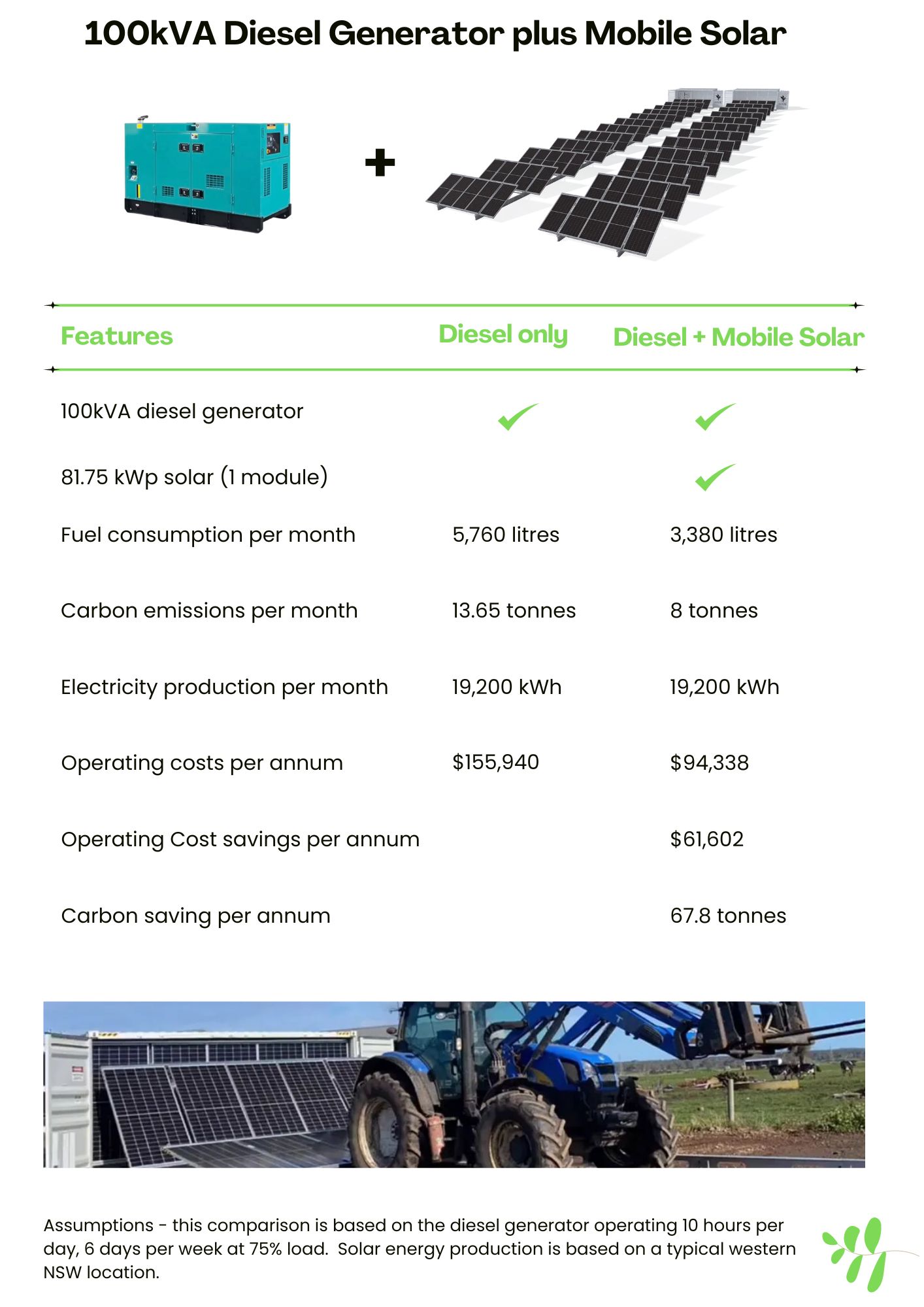
4. Hybrid Solar-Battery Energy Storage Systems (BESS)-Diesel Backup Systems
Finally, what we think is the ultimate replacement for diesel generators today. These systems combine the cost and carbon saving benefits of the hybrid solar-diesel generator system with a battery energy storage system (BESS) which allows the solar to do the heavy lifting on the bulk of the power generation.
The diesel generator is now just there as a backup for periods of prolonged bad weather where the solar production can’t meet demand.
Mobile Hybrid Solar - Battery Energy Storage System
Our state-of-the-art mobile solar energy system is the next generation of power for mines, construction sites, and renewable energy projects.
These systems are quiet, less poluting and very cheap to run because you are no longer burning diesel fuel at two dollars per litre – instead you are getting your energy free from the sun. Lower costs and less carbon emissions – a double win.
Here is an example of the benefits of replacing a 100kVA diesel generator with one of our hybrid mobile solar systems which incorporate a BESS and backup diesel generator for supply security. These systems are circular by design. (Note – this example is generic and based on a number of assumptions. Get in touch with us to get an assessment for your specific site).
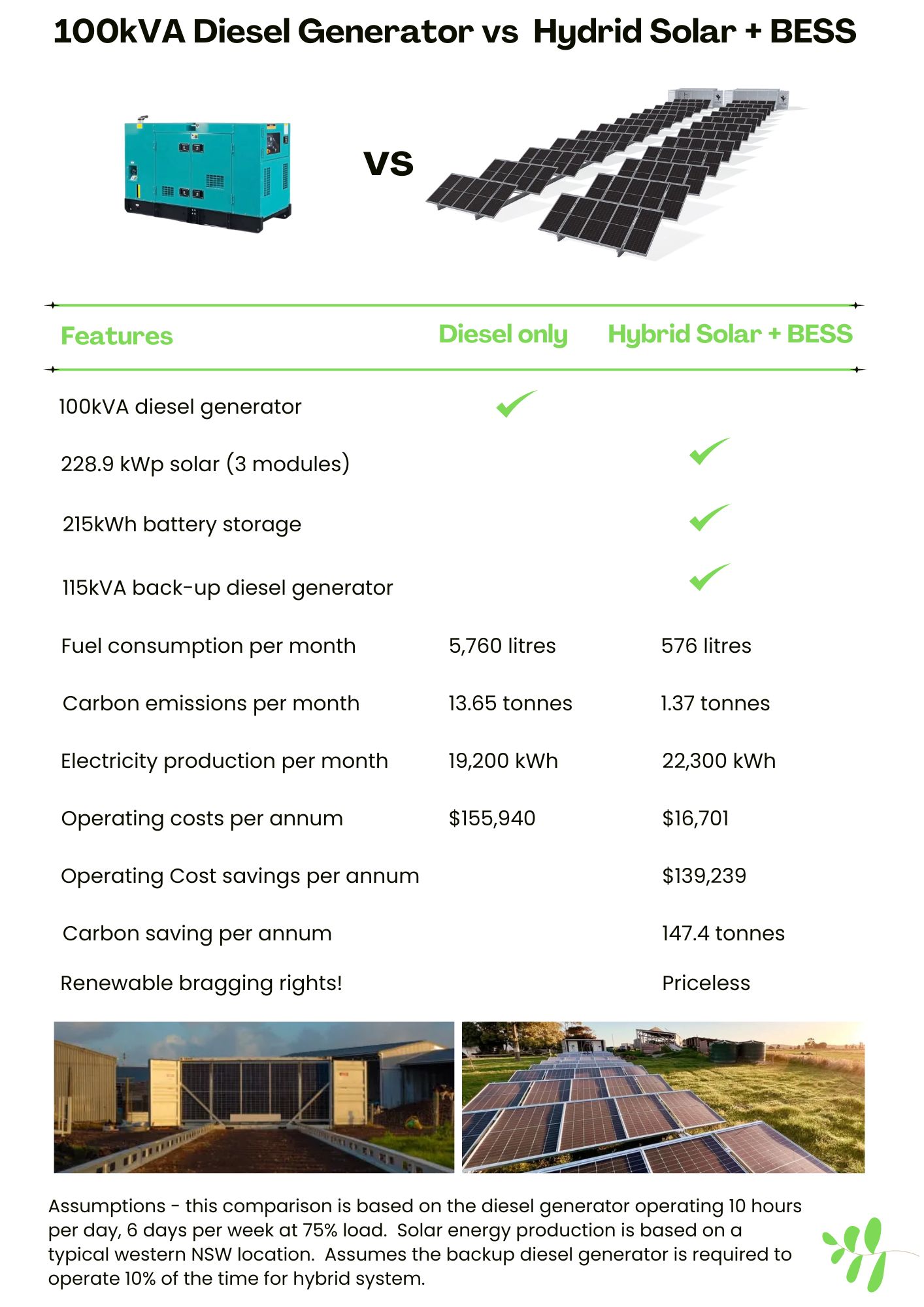
Conclusion – Time to Move On
The use of diesel generators in building renewable energy projects is an unfortunate reality, but it doesn’t have to be. As the industry continues to innovate, adopting alternatives like renewable diesel, hydrogen fuel generators, and hybrid systems can help reduce carbon emissions even before renewable projects are completed.
It’s time to power up the clean energy revolution from start to finish.
Want to know more about our hybrid power options?
Our state-of-the-art mobile solar energy system is the next generation of power for mines, construction sites, and renewable energy projects. Designed for ultimate efficiency, this containerised solution can be rapidly deployed to even the most remote locations, providing instant access to clean, renewable energy.
Equipped with integrated battery storage, our mobile solar system ensures a steady supply of power, day or night. And for those times when the sun isn’t shining, a built-in standby diesel generator guarantees uninterrupted energy, so your operations never miss a beat.
Deployable in under 4 hours, the smallest module is 32.7kWp solar with 67kWh of battery storage and a rated power of 25kW all the way up to 81.75kWp solar only modules (1 container) and battery systems up to 1720kWh @500kW rated power (1 container) with standby diesel generator options from 40 to 125kVA.
As a modular system you simply add more modules to get to any system capacity you need.
Contact us to learn more.
Others Also Liked These Insights
Now NSW Government Agencies Can Meet their WaSM Targets with Circular Solar
Solar energy is already an essential part of New South Wales’ plan to reduce emissions and move away from reliance on fossil fuels. But there’s a way to take solar even further: by incorporating reused solar panels into energy systems.
Case Study: Australia’s Largest Solar Energy Project Using 100% Reused Panels
In a groundbreaking project, Australia’s largest solar energy installation using 100% reused solar panels was commissioned in August 2024 at the Kurrajong Recycling Facility in Wagga Wagga, NSW.
4 Ways to Integrate Circular Economy Principles into Your Solar Energy Project
You can achieve renewable energy, net zero and circular economy targets all-in-one project by incorporating circular economy principles into your solar energy projects.
Need help kicking the diesel habit?
hello@secondlifesolar.com.au
